Centennial of worst inaugural weather upcoming
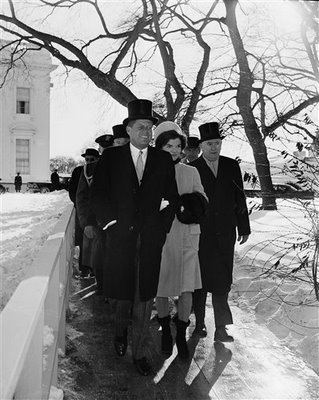 By Randolphe E. Schmid
By Randolphe E. SchmidAssociated Press Writer
WASHINGTON — "I knew it would be a cold day when I was made president," William Howard Taft joked just a century ago, taking office in 1909 in what has been described as the worst inaugural weather ever. Ten inches of snow fell. Wind downed trees and telephone poles. Streets were clogged and trains stalled.And that was when presidents were sworn in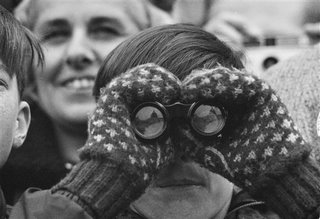 in March.
in March.
Now the ceremony is held in January and President-elect Barack Obama is hoping his weather luck holds.
He chose an outdoor location for his acceptance speech at the Democratic National Convention in Denver last August and got a balmy night with no precipitation. On election night the weather favored his Chicago victory celebration, with the temperature around 60 degrees, unusual for a November night i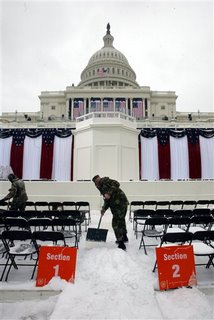 n Chicago.
n Chicago.
So, what to expect on this Inauguration Day?
Well, normal wouldn't be so bad.
The normal high temperature for the day is in the low to mid-40s and the typical noon reading would be about 37 degrees, under a partly cloudy sky with a 10 mph wind.
On a typical Jan. 20 there is about a 1 in 20 chance of snow during the ceremony. But there is about a 3 out of 10 chance that snow will already be on the ground, the National Weather Service reports.
While the event is still a week away, the current Weather Service forecast for Jan. 20 is morning clouds giving way to afternoon sun with highs in the upper 30s and a 10 percent chance of precipitation.
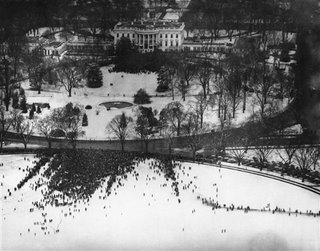 "Historians are always trying to read symbolism into inaugurations," says Donald Ritchie, associate historian at the Senate Historical Office. "If the sun breaks through and there is a burst of light just as the person steps forward, this is a good omen; this is something that goes back to Roman days."
"Historians are always trying to read symbolism into inaugurations," says Donald Ritchie, associate historian at the Senate Historical Office. "If the sun breaks through and there is a burst of light just as the person steps forward, this is a good omen; this is something that goes back to Roman days."
For example, "It was warm and sunny on Ronald Reagan's first inauguration; people saw that as a good omen."
On the other hand, Ulysses S. Grant's "second inauguration was so cold that all you hear about is the discomfort of the people who went to the inauguration and then went to the inaugural ball."
"They had canaries in cages all over the pension building, and the canaries froze; so that was taken as a symbol that this was not going to be a good time," Ritchie said.
Local authorities bracing for a record turnout for the nation's first African-American president may recall the worst inaugural traffic jam.
An 8-inch snowfall on the eve of John F. Kennedy's inauguration in 1961 left hundreds of cars marooned and thousands more abandoned. The president-elect had to cancel dinner plans and, in a struggle to keep other commitments, is reported to have had only four hours of sleep. An army of men worked all night to clear Pennsylvania Avenue, using flame-throwers.
Bad as it was for Taft, his wasn't the coldest inauguration.
Ronald Reagan took that chilly prize in 1985 when the noon temperature was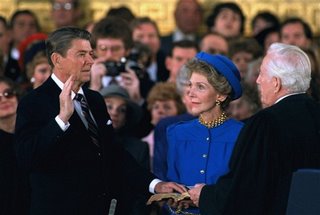 7 degrees and the wind chill was between minus 10 degrees and minus 20 degrees. The ceremony for Reagan, like Taft, was moved indoors.
7 degrees and the wind chill was between minus 10 degrees and minus 20 degrees. The ceremony for Reagan, like Taft, was moved indoors.
So, if Reagan's was the coldest, who managed the hottest inauguration?
Hint: It was 89 degrees.
That's a trick question, of course. Gerald Ford took office on Aug. 9, 1974, after Richard Nixon resigned.
The warmest January inauguration? Oddly, it was Reagan's first, with a temperature of 55 degrees. That tied the top reading for March inaugurations, set by Woodrow Wilson in 1913.
William Henry Harrison's swearing-in turned out the most tragic.
It was a cloudy, blustery day in 1841. Harrison spoke for more than an hour and rode a horse to and from the Capitol without a hat or overcoat.
He caught a chill, which turned into pneumonia, and died just one month later.
The official date for inaugurating a president was changed from March 4 to Jan. 20 in 1937. It was moved up so a president could take office sooner, but weather was a factor in choosing the new date. A study of records showed Jan. 20 was less likely to be stormy than March 4.
Not that year!
Jan. 20, 1937, still holds the rainfall record for any Jan. 20 in Washington, with 1.77 inches. Following sleet and freezing rain in the morning, nearly three-quarters of an inch of rain poured down between 11 a.m. and 1 p.m.
President Franklin D. Roosevelt rode back to the White House in an open car, which accumulated a half-inch of water on the floor by the time he arrived to watch the parade slog by.
Nebraska Sen. George W. Norris, who had spearheaded the effort to change the date, refused to be the scapegoat for the frightful conditions.
"They're trying to blame this one on me. You can't charge this up to me until March 4 when you see what kind of day that is," Norris said, according to historian David M. Ludlum's book "The Weather Factor."
March 4, 1937, turned out to be a wonderful day, 67 degrees and sunny.
Labels: inaugural weather
 RSS
RSS




0 Comments:
Post a Comment
<< Home